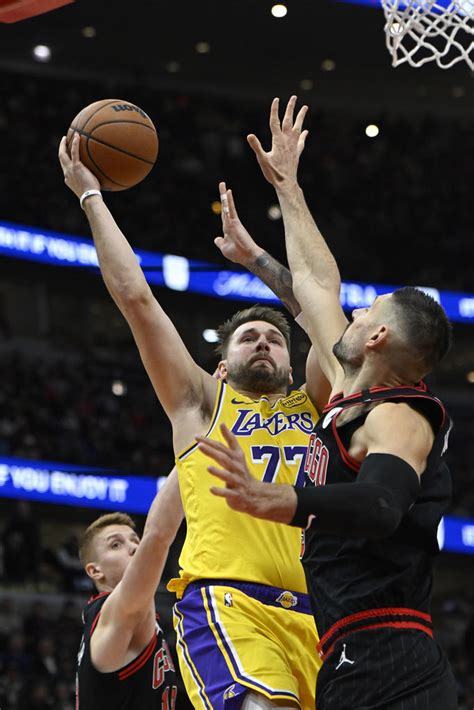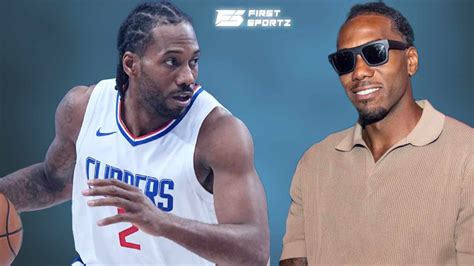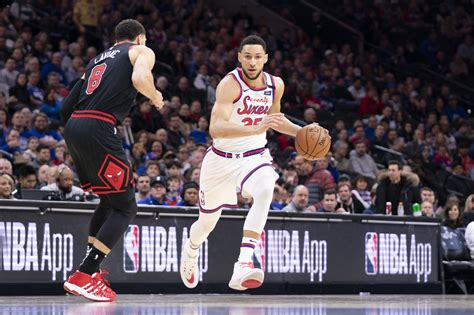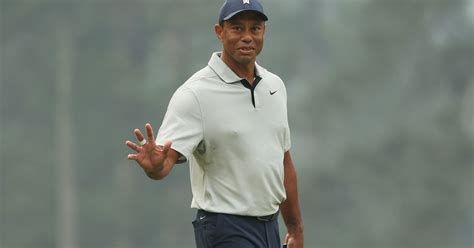
Bill Simmons, the outspoken NBA analyst and podcaster, has heavily criticized both the Chicago Bulls and the Los Angeles Lakers following their recent trade deadline moves, labeling the Lakers’ acquisition of D’Angelo Russell, Malik Beasley, and Jarred Vanderbilt a “desperation heave.” Simmons argues the Bulls stood pat while other teams in the Eastern Conference improved, diminishing their playoff chances, and characterized the Lakers’ moves as an overreaction to their poor season.
Bill Simmons didn’t hold back on his podcast, excoriating the Bulls for their inaction and questioning the long-term viability of the Lakers’ approach. “The Bulls did nothing,” Simmons lamented, highlighting the missed opportunity to rebuild or at least acquire future assets. He pointed to the Cleveland Cavaliers’ acquisition of Caris LeVert last year as an example of a team proactively improving, a path he believes the Bulls should have emulated. Simmons believes the Bulls are stuck in mediocrity, failing to compete at the highest level while also refusing to bottom out and rebuild through the draft.
Regarding the Lakers, Simmons said, “That’s a ‘we’re-desperate-we’re-going-to-throw-everything-at-the-wall-and-see-what-sticks’ trade.” He questioned whether the new additions would truly move the needle for a team struggling to stay in playoff contention, suggesting the moves were more about appeasing LeBron James than building a sustainable contender. The Lakers, currently outside the playoff picture in the Western Conference, are hoping the new additions will spark a turnaround and propel them into the postseason.
Simmons’ criticism underscores the high stakes and intense scrutiny surrounding NBA teams as they navigate the trade deadline and playoff push. His comments are likely to fuel further debate about the Bulls’ direction and the Lakers’ chances of contending for a championship.
The Bulls’ inactivity at the trade deadline has drawn widespread criticism, with many analysts questioning the team’s long-term strategy. After making a splash last season by acquiring DeMar DeRozan, the Bulls faltered in the playoffs and have struggled to replicate that success this season. Injuries to key players like Lonzo Ball have undoubtedly hampered their progress, but the team’s overall performance has been underwhelming.
Simmons isn’t alone in his assessment of the Bulls’ situation. Many observers believe the team is stuck in a state of mediocrity, too good to tank for a high draft pick but not good enough to seriously contend for a title. This has led to calls for the team to embrace a full-scale rebuild, trading away veterans like DeRozan and Zach LaVine in exchange for younger players and draft assets. The Bulls’ front office, however, has remained committed to the current core, seemingly unwilling to make the tough decisions necessary to chart a new course.
The Lakers’ trade deadline activity, while more dramatic than the Bulls’, has also been met with mixed reactions. The team parted ways with Russell Westbrook, Patrick Beverley, Thomas Bryant, and Damian Jones, among others, to acquire Russell, Beasley, and Vanderbilt. While these additions are expected to improve the Lakers’ shooting and defense, questions remain about their fit alongside LeBron James and Anthony Davis.
The Lakers’ struggles this season have been well-documented. Injuries to James and Davis have limited their time on the court together, and the team’s lack of consistent shooting has been a major weakness. The acquisition of Russell, Beasley, and Vanderbilt is aimed at addressing these issues, but it remains to be seen whether they will be enough to turn the Lakers’ season around.
Simmons’ characterization of the Lakers’ moves as a “desperation heave” suggests he believes the team is acting out of panic rather than a well-thought-out strategy. He may be questioning whether the new additions are truly upgrades over the players they replaced, or whether they will be able to mesh quickly enough to make a significant impact. The Lakers’ remaining games will be crucial in determining whether their trade deadline moves were a success or a failure.
Furthermore, Simmons’ critique touches upon the broader issue of team building in the NBA. Some teams, like the San Antonio Spurs and Oklahoma City Thunder, have embraced long-term rebuilds, accumulating draft picks and young talent in the hopes of building a future contender. Other teams, like the Lakers, have opted for a more aggressive approach, trading away future assets to acquire established stars and compete for championships in the present. There is no one-size-fits-all approach to team building, and the success of any strategy depends on a variety of factors, including luck, player development, and team chemistry.
The Bulls’ reluctance to rebuild and the Lakers’ eagerness to contend reflect these contrasting philosophies. The Bulls appear content to remain a fringe playoff team, while the Lakers are determined to maximize their chances of winning a championship while James is still in his prime. Whether these approaches will ultimately prove successful remains to be seen.
The pressure is particularly high on the Lakers, given James’ age and the team’s championship aspirations. The team has already won one title with James and Davis leading the way, but their window of opportunity may be closing. The Lakers’ front office is under immense pressure to build a team capable of competing for championships, and the trade deadline moves reflect that urgency.
Ultimately, the success of the Bulls’ and Lakers’ trade deadline decisions will be judged by their performance on the court. If the Bulls continue to struggle, they may be forced to reconsider their long-term strategy. If the Lakers fail to make the playoffs or make a deep run, their trade deadline moves will be viewed as a failure. Simmons’ comments add to the already intense scrutiny surrounding these teams, and the coming weeks will be crucial in determining their fate.
Beyond the immediate impact on the Bulls and Lakers, Simmons’ critique raises broader questions about the state of the NBA. The league is increasingly dominated by a small number of superteams, while many other teams struggle to compete. This has led to concerns about competitive balance and the long-term health of the league.
The Bulls’ and Lakers’ contrasting approaches to team building reflect this dynamic. The Bulls are a team struggling to stay relevant in a league dominated by superteams, while the Lakers are attempting to build a team capable of competing with the best. The success or failure of these approaches could have implications for the future of the NBA.
The trade deadline is always a time of great activity and speculation in the NBA, and this year was no exception. The Bulls’ and Lakers’ moves, or lack thereof, were among the most talked-about storylines. Simmons’ comments have only added to the intrigue, and the coming weeks and months will be filled with analysis and debate about the wisdom of these decisions.
Expanded Analysis and Background Information
The context surrounding the Bulls’ inaction is crucial. After the acquisition of DeRozan, Nikola Vucevic, and Ball (before his injury), the Bulls aimed to establish themselves as a contender in the Eastern Conference. However, Ball’s persistent knee issues derailed those plans. Without a reliable point guard and lacking consistent perimeter shooting, the Bulls have struggled to consistently compete with the top teams in the East.
Simmons’ criticism reflects a growing sentiment that the Bulls are in “no man’s land.” They aren’t bad enough to secure high lottery picks, which would aid in a long-term rebuild, but they also lack the talent and cohesion to realistically challenge for a championship. Staying put at the trade deadline suggests the Bulls’ front office believes in the current core, or is unwilling to initiate a potentially painful rebuild. This could stem from a desire to remain competitive and fill the seats at the United Center, as a complete tear-down often leads to decreased attendance and fan interest.
The Lakers’ situation is drastically different. The presence of LeBron James dictates a win-now approach. Trading for Russell, Beasley, and Vanderbilt signals a willingness to re-tool around James and Davis, even if it means sacrificing future assets. The Lakers’ struggles this season were largely attributed to poor roster construction, particularly the fit of Westbrook alongside James and Davis. The Westbrook experiment proved to be a major failure, and the Lakers were desperate to find a more complementary supporting cast.
Simmons’ use of “desperation heave” implies a lack of strategic long-term planning. While the new additions might improve the Lakers’ short-term prospects, questions remain about their long-term fit and impact. The Lakers have mortgaged some of their future flexibility to acquire these players, which could limit their ability to make further improvements in the coming years.
The trade deadline activity also reflects the pressure on Lakers General Manager Rob Pelinka. After winning a championship in 2020, the Lakers have failed to build on that success. The Westbrook trade was a major misstep, and Pelinka is under pressure to redeem himself and deliver a winning team around James.
Furthermore, the Lakers’ moves are influenced by the looming possibility of James’ departure. While James has expressed his commitment to the Lakers, his future beyond his current contract is uncertain. The Lakers are keen to maximize their chances of winning another championship while James is still playing at a high level, even if it means taking risks in the short term.
The financial implications of the trades are also significant. The Lakers were able to shed Westbrook’s massive contract, which provided them with some financial flexibility. However, the salaries of Russell, Beasley, and Vanderbilt will add to the Lakers’ payroll in the coming years. The Lakers will need to carefully manage their finances to remain competitive while also complying with the NBA’s salary cap rules.
League-Wide Context and Competitive Balance
Simmons’ critique also touches on the broader issue of competitive balance in the NBA. The league has become increasingly top-heavy, with a small number of teams dominating the championship conversation. The Bulls’ situation exemplifies the challenges faced by teams that are not among the league’s elite. They lack the star power and financial resources to compete with the top teams, but they are also unwilling to embrace a full-scale rebuild.
The Lakers, on the other hand, are attempting to defy this trend by re-tooling around James and Davis. However, their success is far from guaranteed. The Western Conference is loaded with talented teams, including the Denver Nuggets, Memphis Grizzlies, and Phoenix Suns (who also made significant trade deadline moves). The Lakers will need to overcome significant obstacles to make a deep playoff run.
The NBA’s salary cap system is designed to promote competitive balance, but it has not always been effective. Teams with deep pockets and savvy management have often been able to circumvent the rules and assemble superteams. This has created a competitive disadvantage for smaller-market teams and teams that are less willing to spend money.
The Bulls’ and Lakers’ situations highlight the complexities of team building in the modern NBA. There is no easy path to success, and teams must carefully weigh their options and make strategic decisions to maximize their chances of winning. Simmons’ comments serve as a reminder that these decisions are often met with intense scrutiny and criticism.
Conclusion
Bill Simmons’ scathing assessment of the Bulls’ and Lakers’ trade deadline moves reflects a broader debate about the direction of these two franchises and the state of the NBA. The Bulls’ inaction has raised questions about their long-term strategy, while the Lakers’ “desperation heave” has been met with skepticism. Ultimately, the success or failure of these decisions will be judged by their performance on the court. The coming weeks and months will be crucial in determining whether the Bulls and Lakers can live up to expectations, or whether they will be forced to re-evaluate their approach. Simmons’ strong opinions have undoubtedly amplified the discussion, ensuring that the pressure remains firmly on both front offices and coaching staffs.
Frequently Asked Questions (FAQ)
-
Why did Bill Simmons call the Lakers’ trade a “desperation heave?”
- Bill Simmons used the term “desperation heave” to describe the Lakers’ trade because he believes the team is acting out of panic rather than a well-thought-out strategy. He questions whether the new additions are truly upgrades over the players they replaced and whether they will be able to mesh quickly enough to make a significant impact. Simmons thinks the Lakers made the trades out of a need to make the play-in tournament, and the long term success of the team wasn’t accounted for.
-
What specific concerns did Simmons raise about the Bulls’ inactivity at the trade deadline?
- Simmons criticized the Bulls for not making any moves at the trade deadline, suggesting they missed an opportunity to rebuild or acquire future assets. He believes the Bulls are stuck in mediocrity, failing to compete at the highest level while also refusing to bottom out and rebuild through the draft. He noted that the Bulls did not improve the team’s chances to contend for a championship.
-
Who did the Lakers acquire in the trade that Simmons criticized?
- The Lakers acquired D’Angelo Russell, Malik Beasley, and Jarred Vanderbilt in the trade that Simmons criticized. They traded away Russell Westbrook, Patrick Beverley, Thomas Bryant, and Damian Jones, among others, to acquire these players. The move was said to have improved the team’s overall shooting and youth.
-
What is the overall sentiment surrounding the Bulls’ current situation, according to Simmons and other analysts?
- The overall sentiment is that the Bulls are in a state of mediocrity, too good to tank for a high draft pick but not good enough to seriously contend for a title. This has led to calls for the team to embrace a full-scale rebuild, trading away veterans for younger players and draft assets. Most believe the Bulls are stuck and not improving enough to contend for a championship in the current state.
-
How does Simmons’ critique relate to the broader issue of competitive balance in the NBA?
- Simmons’ critique touches on the increasing dominance of superteams in the NBA, leaving many other teams struggling to compete. The Bulls’ and Lakers’ contrasting approaches to team building reflect this dynamic, with the Bulls struggling to stay relevant and the Lakers attempting to build a team capable of competing with the best. This highlights the challenges faced by teams that are not among the league’s elite and the difficulties of building a contender in the modern NBA.
-
What were the Lakers’ primary motivations for making the trade deadline moves?
- The Lakers’ primary motivations were to improve their roster around LeBron James and Anthony Davis, address their lack of consistent shooting, and shed Russell Westbrook’s contract. They aimed to enhance their playoff chances and maximize their window of contention while James is still playing at a high level. The Lakers also were attempting to get younger and more athletic at several positions, to help with team defense.
-
What is the significance of Lonzo Ball’s injury to the Bulls’ current struggles?
- Lonzo Ball’s persistent knee injury has significantly hampered the Bulls’ progress. Without a reliable point guard and lacking consistent perimeter shooting, the Bulls have struggled to consistently compete with the top teams in the East. Ball’s absence has disrupted the team’s chemistry and overall performance. The Bulls heavily miss Ball’s playmaking ability, and his impact on both sides of the court.
-
How does the Lakers’ situation reflect the pressure on General Manager Rob Pelinka?
- The Lakers’ situation reflects the immense pressure on General Manager Rob Pelinka to build a championship-caliber team around LeBron James. After winning a title in 2020, the Lakers have failed to build on that success, and the Westbrook trade was a major misstep. Pelinka is under pressure to redeem himself and deliver a winning team before James’ career ends. The current state of the team heavily rests on the moves he made.
-
What are the potential long-term consequences of the Lakers’ “desperation heave” trade?
- The potential long-term consequences include sacrificing future flexibility and limiting their ability to make further improvements in the coming years. The Lakers have mortgaged some of their future assets to acquire these players, which could hinder their ability to sustain success beyond the James-Davis era. The trade will have long-term impacts, but the Lakers’ front office is ok with that, as it chases a title in the short term.
-
How do financial considerations factor into the Bulls’ and Lakers’ trade deadline decisions?
- The Lakers were able to shed Westbrook’s massive contract, providing them with some financial flexibility. However, the salaries of Russell, Beasley, and Vanderbilt will add to the Lakers’ payroll in the coming years. The Bulls’ inaction may be influenced by financial constraints or a reluctance to take on additional salary obligations associated with acquiring new players. Both teams must manage their finances carefully to remain competitive while complying with the NBA’s salary cap rules. The Lakers freed up long-term money to build around Anthony Davis when Lebron retires.
-
How does the presence of LeBron James influence the Lakers’ approach to team building?
- The presence of LeBron James dictates a win-now approach for the Lakers. Trading for Russell, Beasley, and Vanderbilt signals a willingness to re-tool around James and Davis, even if it means sacrificing future assets. The Lakers are keen to maximize their chances of winning another championship while James is still playing at a high level, even if it means taking risks in the short term. The Lakers are in a position to compete at the highest level, and understand the urgency of winning another championship.
-
What are some examples of successful and unsuccessful team-building strategies in the NBA?
- Successful team-building strategies include the San Antonio Spurs’ long-term rebuild through the draft and player development, and the Golden State Warriors’ combination of drafting well and acquiring key free agents. Unsuccessful strategies include the Lakers’ Westbrook experiment and teams that consistently prioritize short-term gains over long-term sustainability. The Thunder are rebuilding through acquiring picks and young talent.
-
How might the Bulls’ current approach impact their ability to attract top free agents in the future?
- The Bulls’ current approach may make it difficult to attract top free agents in the future. If the team continues to struggle and fails to demonstrate a clear path to contention, free agents may be less inclined to sign with the Bulls. This could further perpetuate the team’s cycle of mediocrity. Players want to play in winning situations, and the Bulls have not proved they are in that state yet.
-
What other factors, besides trade deadline moves, contribute to a team’s success in the NBA?
- Other factors that contribute to a team’s success include player development, coaching, team chemistry, injury luck, and overall organizational culture. Trade deadline moves are just one piece of the puzzle, and teams must excel in all areas to achieve sustained success. Good coaching and player chemistry can change how good a team truly is, and impact the success of a team.
-
How has the landscape of the NBA changed in recent years, and how has this impacted team-building strategies?
- The NBA has become increasingly dominated by superteams, with a small number of teams controlling the championship conversation. This has led to more aggressive team-building strategies, as teams attempt to acquire multiple stars to compete with the league’s elite. The focus on acquiring star power has also led to increased player movement and a greater emphasis on short-term success. The league continues to evolve and change, and the team’s strategies must also evolve to stay relevant.
-
How do the recent moves by the Suns affect the Lakers’ chances in the Western Conference?
- The Phoenix Suns’ acquisition of Kevin Durant significantly improves their championship prospects and increases the competition in the Western Conference. This makes it even more challenging for the Lakers to make a deep playoff run, as they will likely have to face the Suns at some point in the playoffs. The West became extremely competitive, with several teams improving at the deadline.
-
What role does player chemistry play in the success of a team following trade deadline acquisitions?
- Player chemistry is crucial for the success of a team following trade deadline acquisitions. Even if new players are individually talented, they need to be able to mesh well with their teammates and adapt to the team’s system. Poor chemistry can derail a team’s performance, while strong chemistry can elevate a team’s play beyond the sum of its parts. It is important for the players to get along and work towards one goal.
-
Beyond Bill Simmons, what other media personalities have expressed opinions on the Bulls’ and Lakers’ moves?
- Numerous media personalities have weighed in on the Bulls’ and Lakers’ moves. Many analysts have criticized the Bulls’ inaction and questioned their long-term strategy. Opinions on the Lakers’ moves have been more mixed, with some praising the team for addressing their needs and others questioning the long-term impact of the trades. Each personality has a different opinion and point of view.
-
How does fan sentiment reflect the opinions of analysts like Bill Simmons regarding these trades?
- Fan sentiment often aligns with the opinions of analysts like Bill Simmons. Many Bulls fans have expressed frustration with the team’s lack of activity and are calling for a rebuild. Lakers fans are more divided, with some optimistic about the new additions and others skeptical about their ability to turn the season around. Social media is a tool for fans to directly address their opinions to their peers.
-
What lessons can other NBA teams learn from the Bulls’ and Lakers’ experiences at the trade deadline?
- Other NBA teams can learn the importance of having a clear long-term strategy and avoiding short-sighted decisions driven by desperation. The Bulls’ experience highlights the risks of remaining in mediocrity, while the Lakers’ experience demonstrates the potential pitfalls of mortgaging the future for short-term gains. It’s important to develop players from within the organization.









